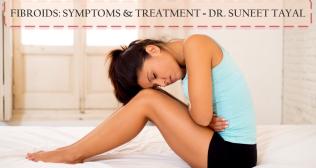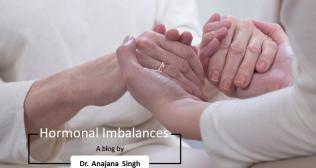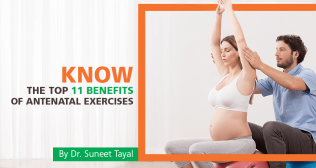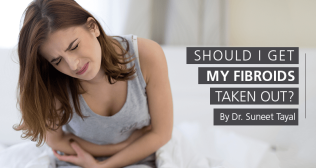
Why You Should Exercise During Your Period: Top 5 Benefits
Periods or menstruation are a monthly cycle in most women. This phase can be difficult for many women due to cramps, bloating, mood swings, and fatigue. Even though resting the body is a better choice, exercise during periods can effectively reduce the symptoms. There are various advantages of doing workouts during periods.
Exercise during periods offers many advantages, including relieving period pain and improving physical and mental well-being. This blog describes the top five benefits of workouts during periods.
Reduces the menstrual cramps:
Many women experience menstrual cramps during periods. Regular exercise can significantly reduce the intensity and duration of the pain. Exercise during periods, such as stretching, core strengthening, and aerobic exercises, showed a noticeable reduction in period pain compared to no workout.
Menstrual cramps occur due to uterine contractions. Exercise for period cramps increases blood flow to the uterus, reducing uterine contractions. Period pain relief exercises also release endorphins, which act as natural painkillers, further reducing the pain. Research shows that regular exercise for period cramps three times a week for eight weeks significantly reduced menstrual pain.
Enhances the mood:
Period pain relief exercises also have the advantage of improving mood and reducing anxiety. Hormonal fluctuations cause periods to display a rollercoaster of emotions. Workouts during periods stabilize the mood and alleviate anxiety and depression. Endorphins, or happy hormones, released during exercises counteract the prostaglandins that cause pain in periods and create a sense of well-being by perking up the mood.
Research showed that individuals who exercise for period cramps also have the advantage of reduced emotional distress and fatigue. Exercise during periods improves physical and mental well-being, keeping the individual active and enabling them to handle the phase easily.
Increases the quality of life:
Periods can make women feel less motivated and sluggish to exercise. However, period pain relief exercises enhance the overall quality of life by improving physical well-being. Literature shows that workouts during periods, such as yoga, enhance functionality, flexibility, and general well-being.
Apart from yoga, other physical exercises such as swimming, running, and cycling also enhance the blood supply and oxygenation of the tissues. This oxygenation increases energy levels by reducing fatigue and counteracting the sluggishness associated with periods.
Balances the hormonal imbalances:
Incorporating exercise in periods as a routine helps during menstruation and builds long-term resilience. As fitness levels improve, the body becomes better equipped to handle physical and emotional stressors, contributing to a healthier and more active lifestyle.
Regular exercise regulates the menstrual cycle by balancing the hormones. Hormonal imbalances during periods lead to hormonal fluctuations, such as increased estrogen secretion, disturbing the regularity of the cycle. Studies have shown that exercise during periods improves the cycle duration and ovulation in women with conditions such as polycystic ovarian diseases and hormonal imbalances.
Workout during periods regulates testosterone levels, which are associated with polycystic ovary syndrome (PCOS). The study also highlighted that exercise reduces insulin resistance and testosterone levels, which affect hormonal regulation and support reproductive health.
Reduces the premenstrual symptoms:
Periods often cause premenstrual symptoms such as bloating, mood swings, and fatigue in women even before the start of the cycle. These can begin much earlier than the actual cycle. Workouts during periods alleviate stress, relax the body, and improve sleep quality by relieving the symptoms.
Studies have shown that simple exercises such as yoga and gentle stretching reduce the fatigue of tissues, leading to reduced irritability and bloating compared to sedentary individuals. They relax the body and reduce the symptoms, which enhances the sleep quality in individuals who exercise regularly compared to those who do not exercise.
Exercise routine during periods:
Exercise in periods has clear advantages. Hence, adjusting the routine for workouts during periods is necessary to increase the quality of life. Period pain relief exercises should include the following. They are:
- Low-impact workouts are better and more effective. Exercises such as yoga, pilates, or walking are gentle and effective during periods of high-impact exercise.
- The body should be hydrated in between exercises. Fluid loss is seen in periods due to bleeding. Hence, that should be balanced by consuming lots of fluids while doing period pain relief exercises.
- In severe period cramps, low-intensity exercises can keep the body moving and reduce the pain.
- Loose, breathable clothing that takes up moisture is better for increasing comfort.
- Mild and gentle stretching relieves cramps and improves flexibility.
It is necessary to keep the body moving by following routine exercise during periods that may not always be fascinating, considering the cramps, fatigue, and emotional burden. However, exercising during periods has many advantages, including improving hormonal balance, stabilizing the mood, improving sleep, reducing cramps, and enhancing the overall quality of life.
Exercise in any form can help keep the body moving. Finding the proper exercise that makes one feel excited and motivated rather than stressing about doing exercises is essential. The key to reducing the pain is to keep moving rather than staying still



















